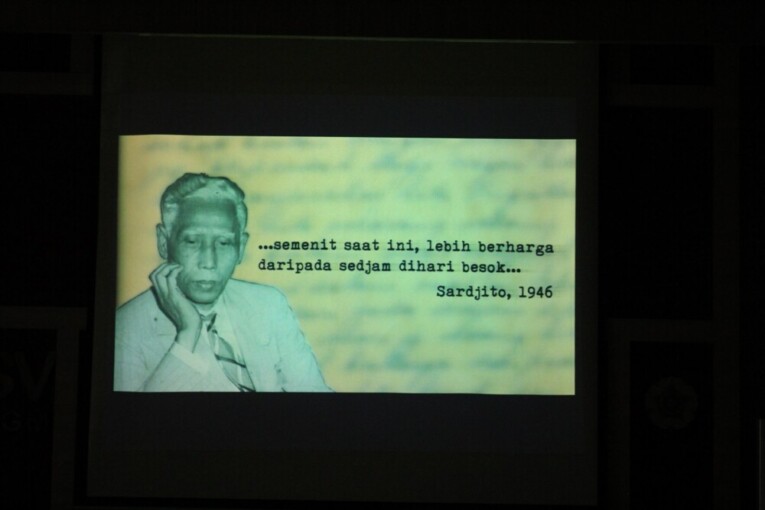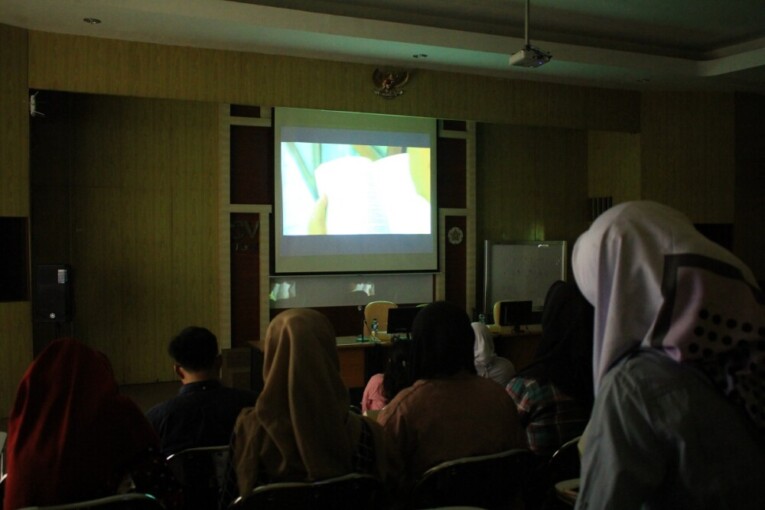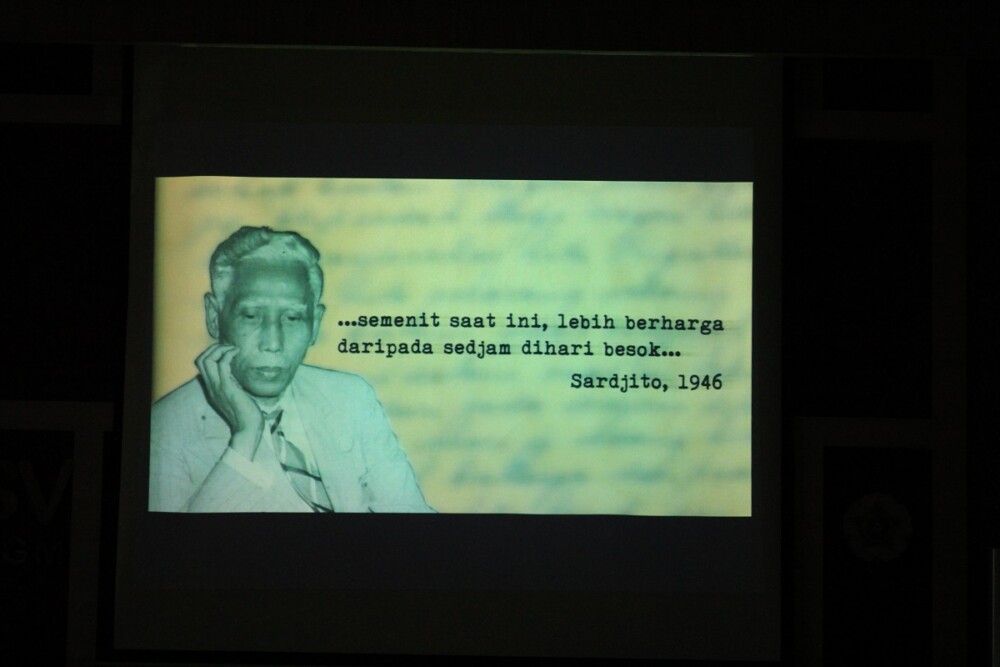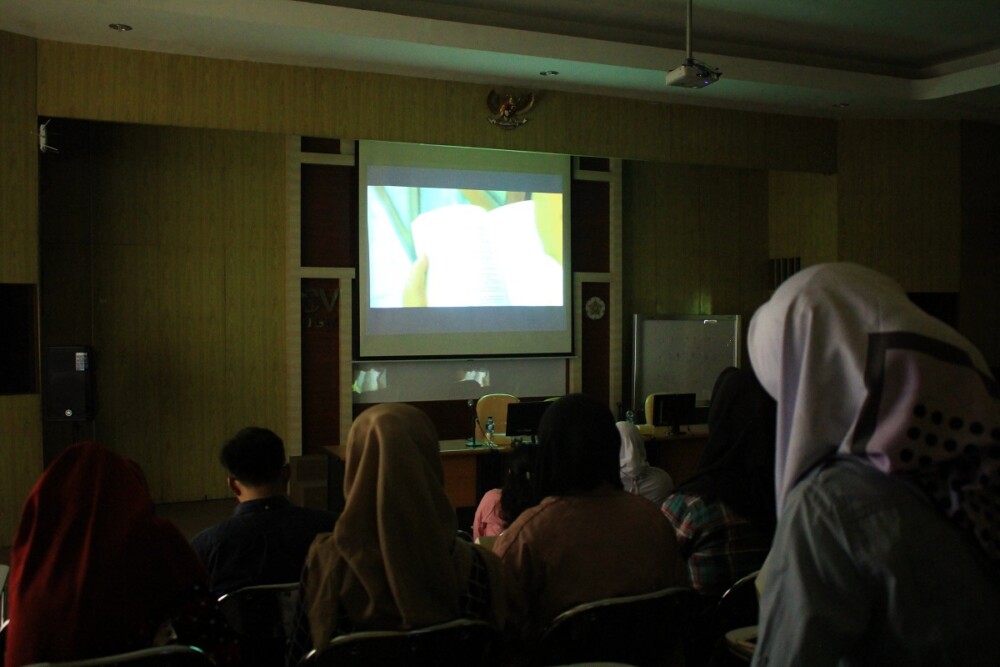On Thursday (7/5) at 10 am, Vocational School Room 225 was packed with academics from UGM and outside the campus. The term break did not deter them from attending the film screening of Sardjito dalam Lukisan Revolusi’(Sardjito through Portrait of Revolution), held by Student Association of Archival Study UGM (HIMADIKA). This documentary movie produced by UGM Archive tells another side of Sardjito that we have known.
The film narrates the tale of Sardjito during the revolution in 1945-1949. It begins in the second week after the independence proclamation, when Sardjito was mandated to take over the Pasteur Institute in Bandung. As a STOVIA graduate doctor, Sardjito was accounted capable in managing the medical institution by government.
Four months passed, the Dutch who did not acknowledge Indonesia’s independence launched military attacks in several cities in Indonesia, including Bandung. At that time, Sardjito was asked by government to evacuate the Pasteur Institute from Bandung to Klaten, because the institute was the main vaccine and drug manufacturer. Sardjito immediately acted to move all the goods, including vaccines and drugs by train.
Arriving at the destination station, he could not immediately go to the institute’s new planned venue because of the distance and there were still Japanese soldiers patrolling in Indonesia. In this condition, Sardjito thought of smuggling the evacuated vaccines under buffalo’s skin as a camouflage during the trip to the new location. Fortunately, his idea was successful and the institute was transferred safely to Klaten.
The plot progresses to the moment of Sardjito’s involvement in the guerrilla warfare to its peak at General Offensive of 1 March 1949. At this time, Sardjito had carried out several vital roles. The main role was to set the place as logistics and medical center for refugees and Indonesian troops.
Then, the unexpected role was his involvement in planning the guerrilla warfare strategy along with General Abdul Haris Nasution. The fact was found from the findings of UGM Archives team after meeting the person who interviewed Nasution. In fact, in 1985 Sardjito received the Guerrilla Star badge from the Indonesian National Armed Forces as a token of his act.
Muslichah, UGM archivist, who was involved in the filming explained the main purpose of the documentary was to introduce Sardjito’s other side as a warrior.
“All this time, he was only known as a doctor or UGM’s first rector and founder. Through this film, we will see how Sardjito was directly involved in the struggle for Indonesian independence,” said Muslichah or ika.
Materials of the documentary film, Ika explained, came from the book Lukisan Revolusi Indonesia published in 1949 by Indonesia Ministry of Information. Additionally, there was a book titled Sejarah Perjuangan Rakyat Kabupaten Klaten published in 1967 by Panitya Pembangunan Monumen Perjoangan ’45 Klaten.
“However, the books were merely the backbone, a kind of foundation that requires re-verification,” she added.
Ika continued, she collected the complete material after conducting research to various places. “There are materials from National Archives of Indonesia, Archives of Indonesian National Military, Manuscripts from Sardjito’s Residence, and several in-person interviews with historical figures as well as some related experts.”
Dwi Nur Rizkiansyah, editor and videographer of UGM Archive team, explained the data collection process of the film had been done since October of last year. However, it was not intended to make a documentary film at first, but to propose Sardjito as one of the national heroes.
Because the data obtained were plentiful and they did not want to waste it, UGM Archive eventually decided to make the film. “After taking the necessary shots and editing, the documentary was completed in May.”
So far, according to Ika, the documentary film has been screened twelve times in different places. None of the screenings was held by the university. “People asked personally to UGM Archives after watching the film trailer on UGM’s YouTube channel and Instagram account.” Rizki added that Archive UGM itself has just scheduled the screening on July 10.
Rizki hoped through this film Sardjito’s figure will be better known by community. On the other hand, Ika hoped that the community will get to know Sardjito’s other side as a warrior. “It is even better if he is recognized as a hero,” she said.





